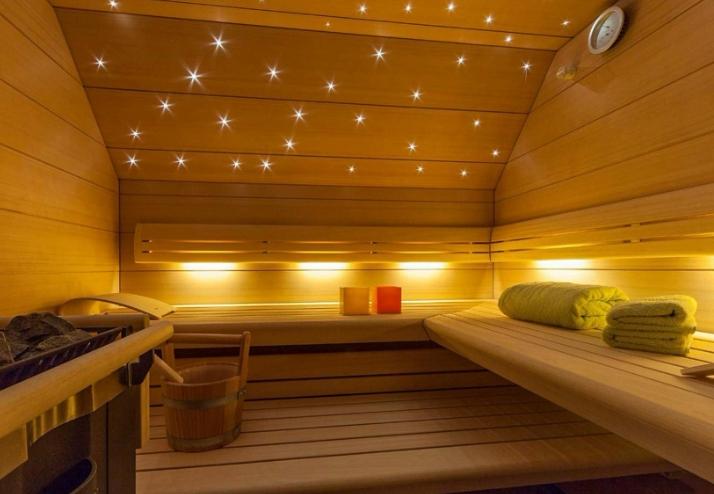Which wire to choose for wiring in an apartment
Choosing wiring products for indoor or outdoor lighting is a big decision. A mistake can lead to serious consequences - system malfunctions, overheating of the wiring, and even fire. The correct choice can be made only consciously, for this purpose it is necessary to get acquainted with the basic criteria of selection.
Cable or Wire
The first step is to deal with the question under the title. At the household level, these concepts are roughly equivalent. Those who are close to electrical engineering and superficially know the regulations often say that a wire has one conductor, and a cable - two or more (referring to GOST 15845-80). In fact, there are cables with a single conductor (for example, PvPu 1x95), and there is a wire consisting of several conductive elements. For example, a self-supporting insulated wire (SSI) consists of three conductors in separate insulation, twisted around a supporting cable.
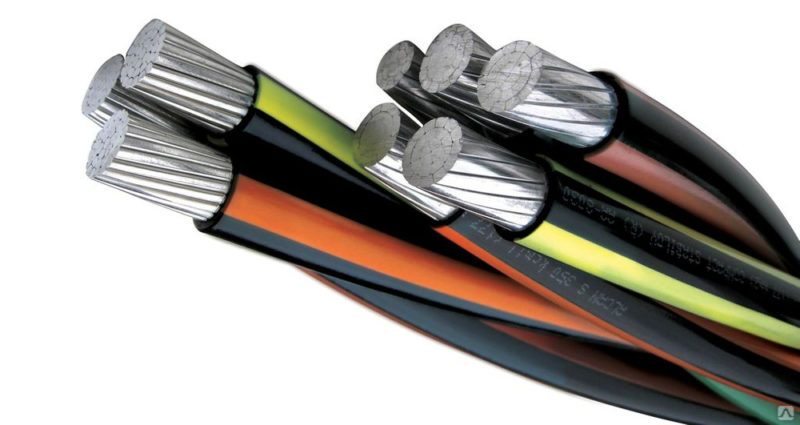
In reality, however. The difference between a cable and a sheathed wire. A wire has a lightweight, single-layer insulation. If a cable consists of several wires with independent insulation, they are encased in one common sheath. This sheathing can have a reinforced design, up to and including armored. This allows the conductor products to be laid in any way, including underground (wires are not laid underground without additional protection). The same applies to single-core cables. So, APVPug cable has a multi-core conductor, cross-linked polyethylene insulation and a multi-layer additional sheath, including an armored layer.
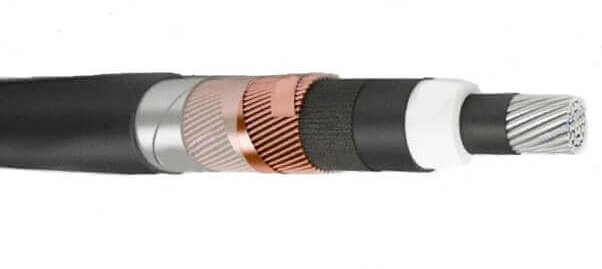
Fields of application in lighting systems
Both wires and cables can be used for lighting systems, depending on conditions:
- it is convenient to use cables for indoor wiring - three conductors (phase, neutral, ground) are laid simultaneously;
- wires can be used for installation in switchboards or for wiring in places where it is difficult to lay cables;
- Cables are mostly used outdoors - because of the higher mechanical strength, protection of the conductors and the above-mentioned convenience;
- When laying overhead (overhead lines, etc.) it is convenient to use CIP - no additional cable is required.
In complex cases, you need to look at the situation, but it is always better to focus on the cable - for reasons of reliability.
Selection of wiring products
Wiring in the house or at the cottage is not made for one year. Before you buy a cable (or wire), you need to pay attention to some important points to avoid problems later.
Material and construction
Copper wire should be used for laying in the apartment - this is a requirement of the PUE. There is a permissive use of aluminum conductors with an aluminum core, and its cross-section must be higher than that of copper wire in the same situation.
| Line | Smallest cross-sectional area of conductors, sq. mm. | |
| copper | aluminum | |
| Group networks | 1,5 | 2,5 |
| From the floors to the apartments | 2,5 | 4,0 |
| Distribution network (risers) for power supply to apartments | 4,0 | 6,0 |
It should be understood that this decision is made in favor of the manufacturer and not because of technical advantages. Aluminum is ductile, so the clamping contacts will periodically weaken, resulting in an increase in the transient resistance. The surface of this metal is permanently covered by an oxide film, which is also not conducive to good contact. And the eternal problem of aluminum wiring - brittleness of cores.
It should also be borne in mind that the increased cross-section will require increased size of terminals and lugs. Therefore, if the electrical installation is carried out "for yourself", it is necessary to use a cable with copper conductors, although it is more expensive.
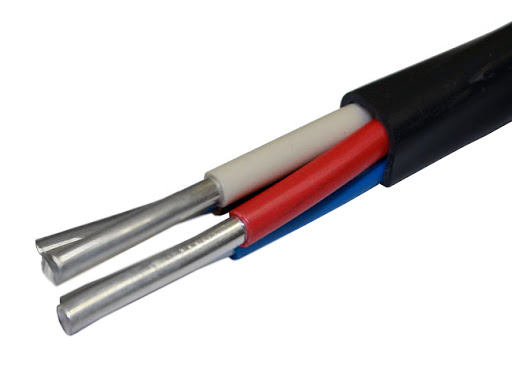
For the installation of 220 volt household networks, you must choose a cable with three conductors:
- phase;
- zero;
- grounding.
This choice will allow you to install the conductor products once. If there is no PE conductor in the lighting system, a line with two wires is sufficient.
Cross-section of conductors
The cross-section of the wire for consumers and lighting is selected on the basis of the paragraphs of the Rules for Electrical Installations, which establish the minimum cross-sections of the conductors. The actual value is selected according to the actual load according to Table 1.3.4 of the Electrical Installations Code. When purchasing products with a caliper or micrometer, you can check what the actual cross-section of the cable has. With a large deviation in the smaller direction, it is better to abandon the purchase.
Important! For calculations, you need to know the cross-section of the conductor Sand not the diameter DTherefore, its measured size must be converted into the cross-sectional area by the formula S=π*(D/2)2 or use the table.
| Measured diameter, mm | 1,4 | 1,8 | 2,25 | 2,75 |
| Corresponding actual cross-section, mm² | 1,5 | 2,5 | 4 | 6 |
Strictly speaking, it is not the diameter that is normalized during production, but the resistance of one meter of conductor, and this parameter also depends on the material of the conductor. Therefore, a slight deviation to the lesser side is allowed. Conversely, diameter compliance may mean nothing due to the use of poor quality copper. Therefore, the best way to determine the quality of the cable for lighting in the house or apartment is to Look at the certificate. It should specify GOSTs (or TU with reference to GOSTs) on the material of the cores. The same applies to other cable parameters - the quality of insulation, etc.
Color marking of cores
Each conductor, enclosed in jacket, has individual insulation. It can have the same color for all three wires. And it is better when each wire has its own color. The standard has become the use of the following colors for three-wire cable:
- red or brown (for the phase wire);
- blue (for neutral wire);
- green or yellow-green for the grounding wire.
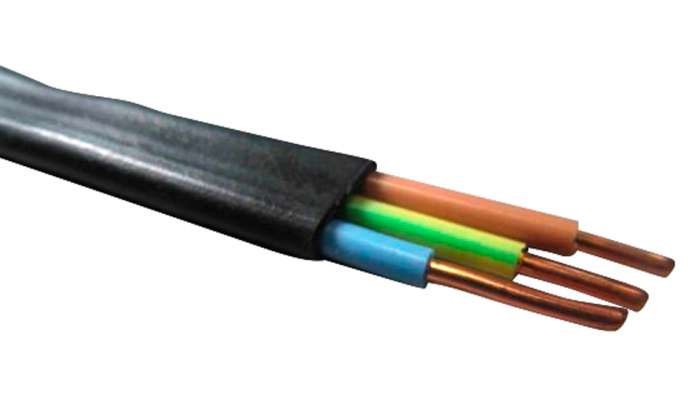
If the coloring does not meet the standard, or if all the wires are the same color, it will not make the circuit inoperable. But such a wire for lighting will make installation and - in the future - repair difficult.
Insulation and jacket thickness
Insulation of each core and overall sheath is made of different dielectric materials. Standards set the thickness of the individual coating. For products 1.5 and 2.5 sq.mm. section it shall be not less than 0.6 mm. The thickness of the total sheath shall be from 1.8 mm for multicore products and from 1.5 mm for single core. Insulation with these mechanical parameters will provide strength when cutting and slicing, but will not create problems when laying, while maintaining flexibility. In fact, the quality of the insulation is just as important. It is better to check it with a megohmmeter for 1000 volts. It should show a resistance of at least 1 megohm.
Important! Measure the insulation resistance after cutting, laying and cutting the cable, but before you connect the switching devices and consumers.
Cable Marking
Cable letter designation can give a lot of information. So, if the first letter in the marking is А, then this product has aluminum cores. If any other letter - it is copper. The letter К in the name has a control cable (with copper cores), for measuring and signaling circuits, and if at the beginning of the marking П - then it is a wire. The next (or first in the absence of A, P or К) denotes the insulation material of the common sheath:
- Р - rubber;
- В - polyvinyl chloride;
- К - capron
- П - polyethylene;
- other materials.
The next letter shows what the individual core insulation is made of. It is selected from the same list as the previous one. Further there may be letters denoting other properties of the conductive product:
- Г - flexible;
- ng - noncombustible;
- Ls - Low Smoke, low smoke emission when heated;
- Б - armor availability;
- П - flat
- other designations.
The letters are followed by numbers indicating the number of wires and their cross-section. Thus, the marking AVVG 3x6,0 is an aluminum cable with insulation of each core of PVC, common jacket - made of the same material, flexible with three conductors cross section of 6 sq.mm. each. And a combination of VVG 3h6,0 is labeled the same product, only with copper conductors. If the cable is labeled KVVGngLs 3x1,5, it is a control cable with core insulation and overall sheath of incombustible PVCwhich generates a small amount of smoke and has three conductors of 1.5 mm².
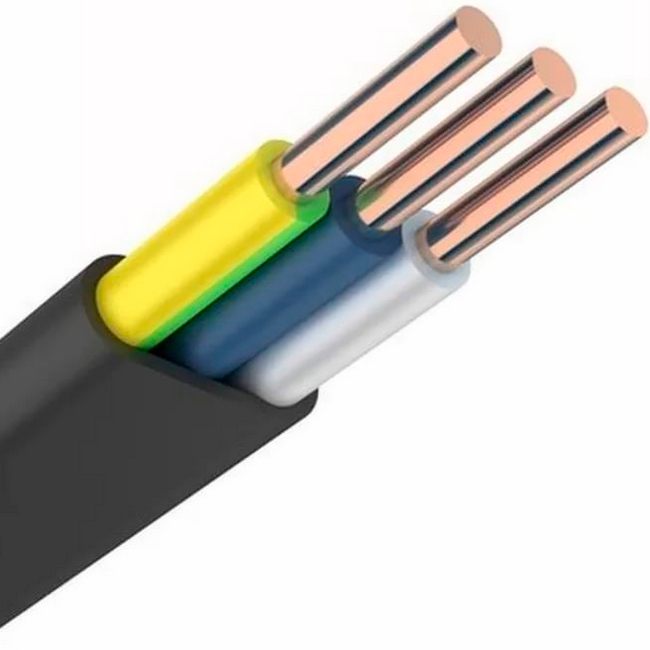
Packaging
In retail and small wholesale wire products comes in coils. The total length of the cable is several hundred meters. This amount is excessive in most cases, but sellers usually cut off the necessary length starting at one meter.
External Inspection
When buying any quantity of cable products, it will not be superfluous to inspect the purchased product, despite the presence of a certificate and assurances of the seller. It is necessary to pay attention to the integrity of the insulation, the absence of cracks and abrasions, the absence of corrosion on the cut of the cores. You should also be aware that sharp bends in the cable can hide fractures in the conductor or cracks in the insulation. If all or part of the defects are present, it is better to refuse to buy.
PUNP is a bad option
There is still cable on sale PUNP at an attractive price. Do not use it under any circumstances, especially in a wooden house. The fact is that the specifications, according to which this cable is produced (although according to the marking it is a wire), allow a significant reduction in the cross section of the conductive cores (against the declared), and also allow a reduction in the thickness of the insulation. Therefore, this wire (?) is prone to overheating and even fire, as confirmed by statistics.
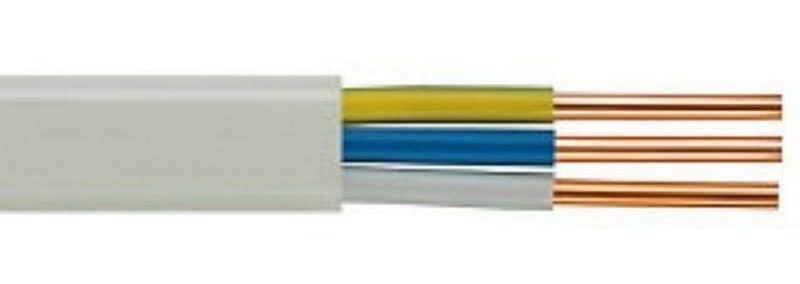
It is also not recommended to use for apartments wire products with stranded conductors. The reason is the same - increased fire hazard due to poor resistance to heat.
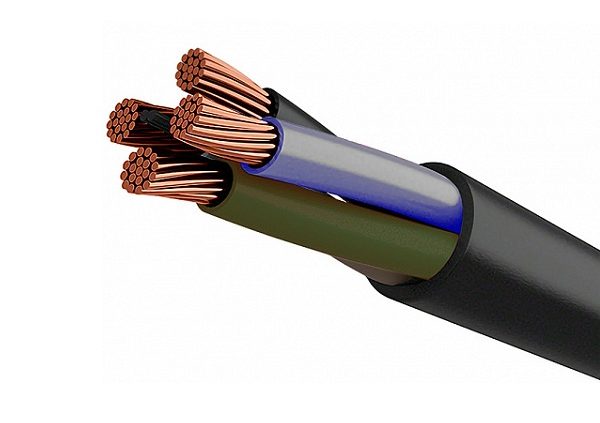
Selecting the cross section and brand of cable
The most popular cable for household wiring - VVG of the appropriate cross section. This is a good domestic product, it has basic and additional PVC insulation and is available in several versions:
- VVG - conventional product;
- VVGng - insulation does not support combustion;
- VVGng-Ls - self-extinguishing insulation with low smoke emission;
- VVGngFR-Ls - with additional fire protection.
Cable VVGng corresponds to its foreign analogue NYM.
Important! On sale there are products marked NUM. This "accidental" typo means that the cable is not original and its parameters - on the conscience of the manufacturer.
Sections must be chosen for the existing and anticipated load. But there are situations where consumers are not definitively known (for example, when building a new house or major renovation of an apartment). In such cases, you can be guided by the values of cross-sections worked out by experience.
For input
When constructing an apartment building, the power consumed by a single apartment is laid down in the design. The vertical wiring of the entrance ("risers") is also calculated for this value. For normal power consumption, the input to the apartment is Cable with a cross section of conductors from 6 to 10 sq. mm. This is enough for any load within reason. Do not exceed the power limit, which limits the cross-sectional area at the inlet to 10 sq.mm. This can lead to overloading of the house wiring.
For lighting
For the apartment lighting network In 99+ percent of cases, a cable with a cross section of 1.5 mm² is sufficient.. Due to the general trend of switching to LED equipment, the prospect of the need to increase the load capacity of the cable for lighting in any apartment is absent.
For sockets
For sockets in the home the following is sufficient cross section 2.5 sq.mm. But for individual consumers (washing machines, air conditioners, etc.) must provide individual lines with an increased cross section of conductors.
Important! The cross-sectional area of the conductor depends not only on the load, but also on the way of laying. With concealed wiring cooling conditions are worse, so the tendency to overheat is higher, so you must choose thicker conductors. This is taken into account in Table 1.3.4 of the Electrical Code.
Special cases of lighting installations
Separately, it is worth considering individual options for the arrangement of lighting outdoors. They have their own specifics.
Bath and sauna.
Washing rooms are characterized by high humidity, so they prohibited laying electrical lines in the metal pipes and sleeves because of their tendency to corrode. Steam rooms and saunas also have high temperatures, and execution of electrical wiring in them is allowed only heat-resistant cables and wires:
- RKGM;
- PRKA;
- ПРКА;
- PMTK.
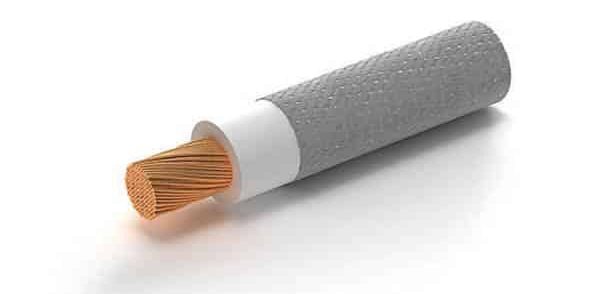
You can also use OLFLEX HEAT 205 of foreign production, but it is more expensive.
Street lighting
Feature street lighting is that the lantern(s) can be at a considerable distance from the switchboard and the switch. Therefore, after selecting the size should make an additional check. Make sure that at the calculated load, the voltage at the farthest point will not be more than 5% lower than the rated voltage. The easiest way to calculate the voltage loss is to use online calculators that can be found on the Internet. If the selected wire for the light does not meet this condition, it is necessary to use products with a higher bandwidth.
Lighting a porch, gazebo or balcony
In this case, the aesthetic component is of great importance. This means that any homeowner for the organization of lighting will choose concealed wiring, except, perhaps, the design in the style of retro. This is not prohibited by the rules, but we must remember that this may require an increased cross section of wires, which will remind you of the same table 1.3.4 PUE. And if gazebo stands far from the switchboard, you must not forget to check the line for voltage losses.
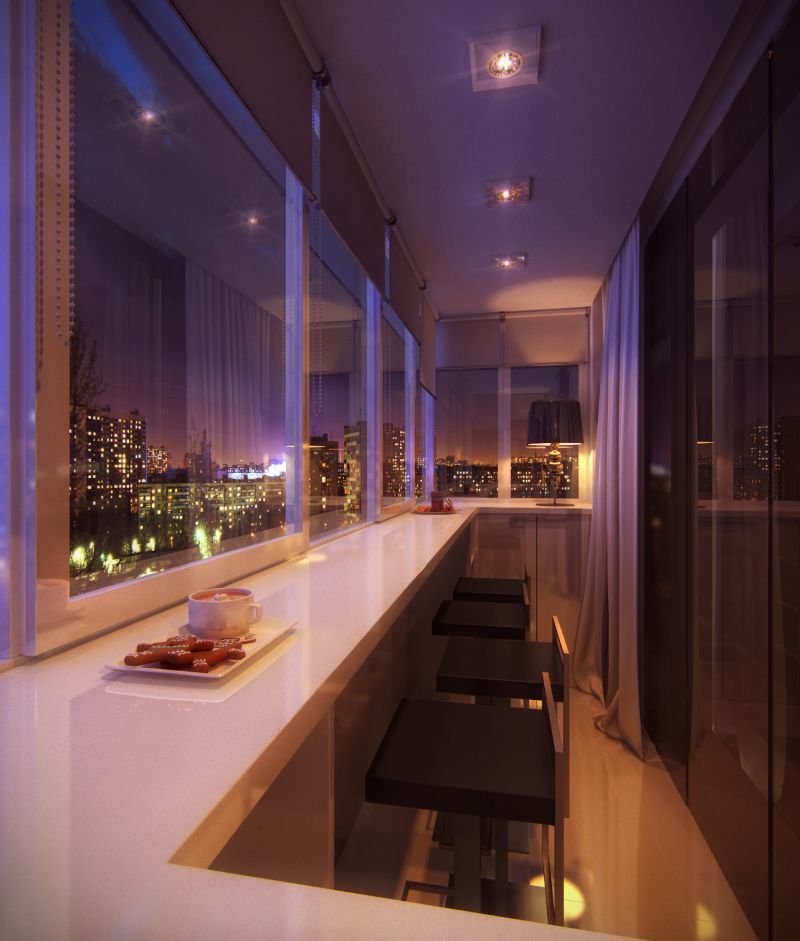
Choosing wiring products for lighting is a responsible business. Failure to follow simple rules can cause a lot of trouble in the future. To avoid them, you only need to learn the simple terms of choice.
